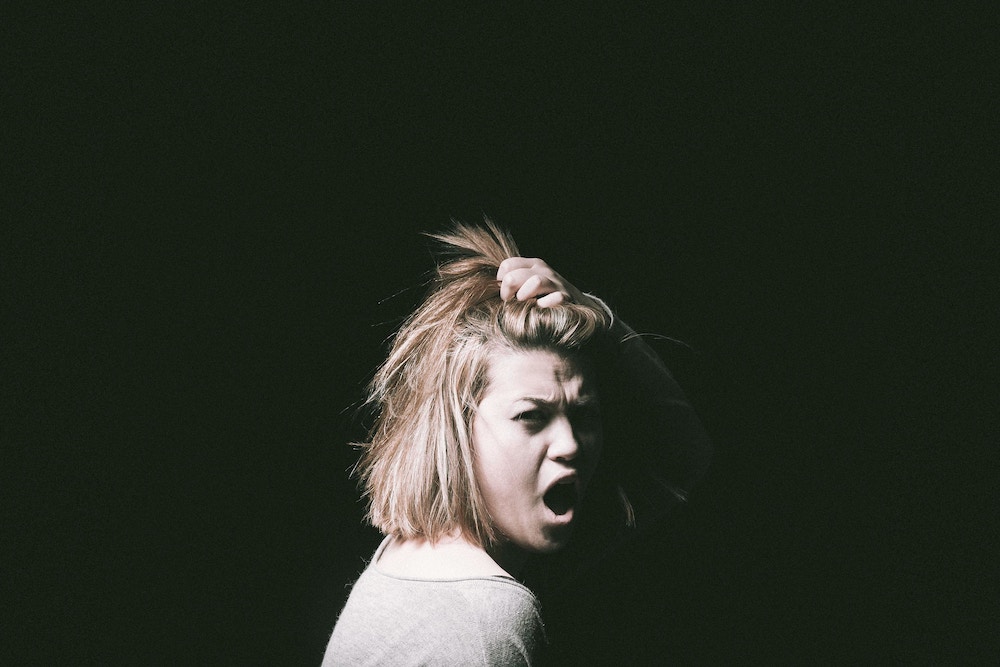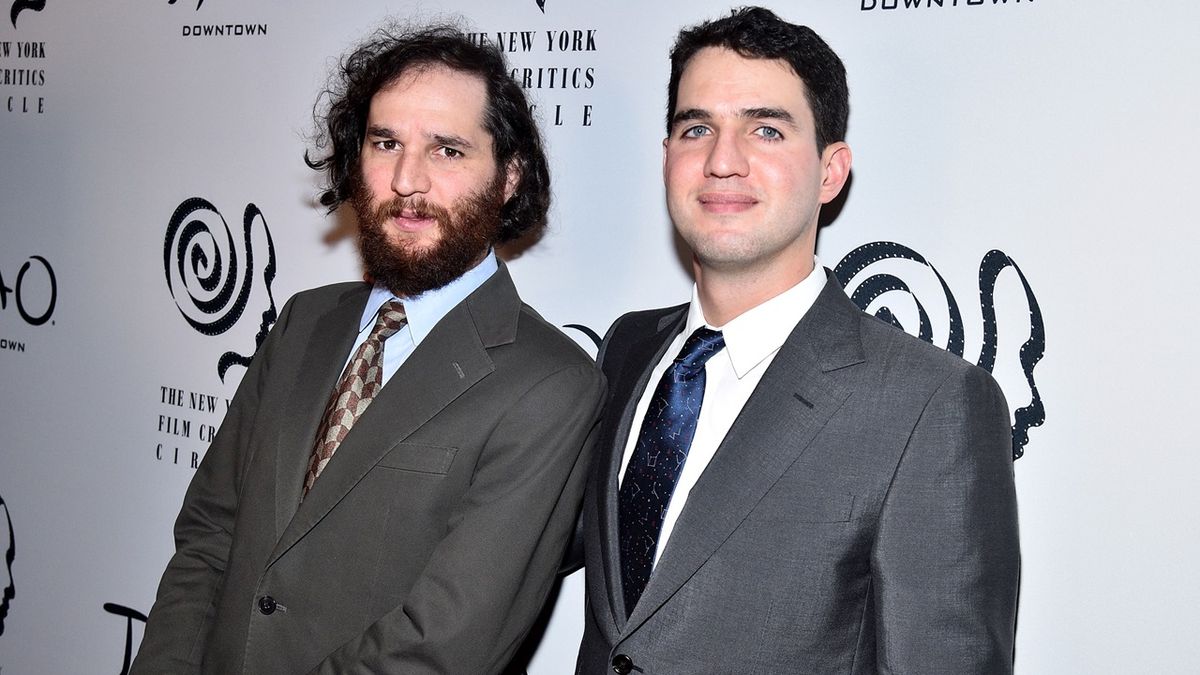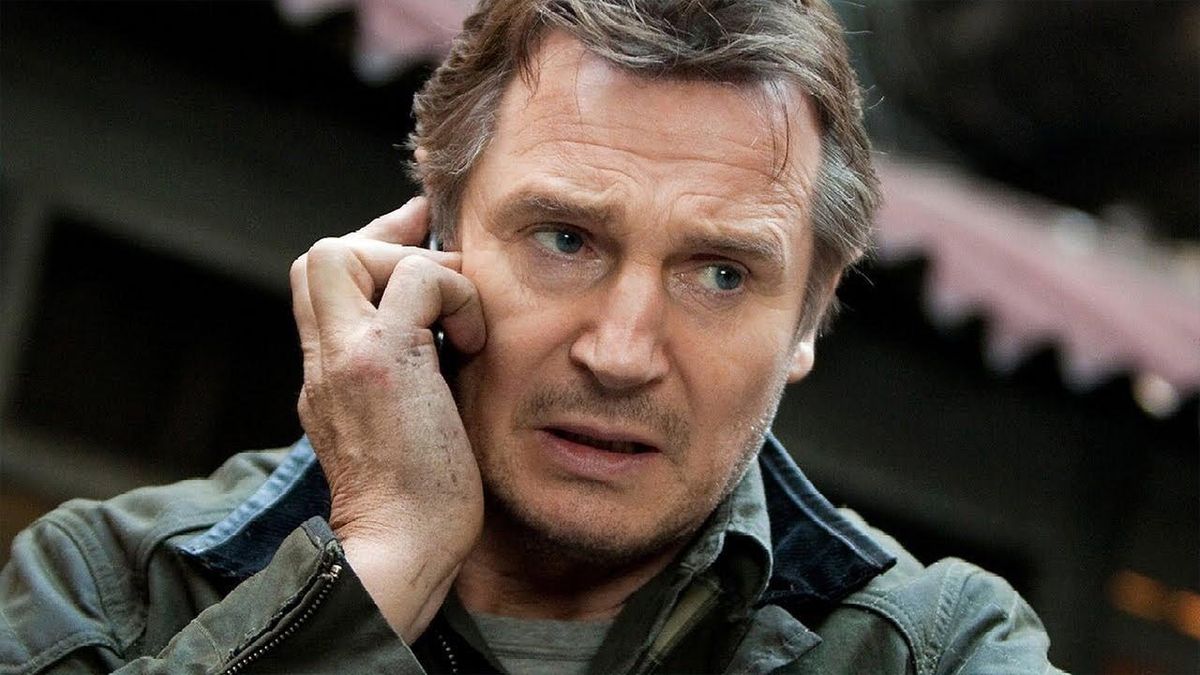Since having my daughter at the height of COVID fear in May 2020, I have learned the best way to scream in your car. Windows up, no matter how hot it is. Maybe you think about what it would be like if you accidentally left your baby in the car this hot. Maybe it’s good you feel too hot. Maybe you deserve it. No music. Shut off NPR, silence reports of death tolls or an active shooter or the election or a new hot restaurant or air pollution. If you can, wait until no one is walking past, though you might not be able to wait. The scream will be loud and painful; the car amplifies the sound in a way that scares you—the first time.
Cover your ears.
My entire life, I’ve prided myself on never being an angry person. My parents rarely yelled at me, and I rarely yell at anyone. I’ve never been in a physical fight. In my dreams, I sometimes try to scream at someone, but I can’t. I try to hit someone, and my arm hits soft like a child’s, or my fist dissolves into smoke. In these dreams, I’m angry about my weakness. When I’m awake, I’m not. The symbolism is, of course, obvious.
If I read enough, fixed everything, controlled it all, she would be okay.
But six months after my daughter was born, something changed. I’d been up all night, every night, Googling every terrifying thing that could happen to our precious, perfect baby. I’d fallen in love, and was obsessed with the many possible ways I could lose her. If I read enough, fixed everything, controlled it all, she would be okay. A false, impossible hope, I knew—but I didn’t care that my worry was beyond logic. Sometimes, in the middle of an article on the Mayo Clinic’s website, I’d realize I’d read it before—many times before. None of it helped, and yet I kept on. Was the swaddle too tight, was her room too cold, was she wearing too many layers? Was her cough okay? Was this rash ok? Was that other weird sound okay? Was she eating enough? Was I playing enough? Was I playing too much?? COVID anxiety multiplied my new-parent anxiety. At the start of the pandemic, the rhetoric for parents of young children was that they could and maybe would die from COVID. Public spaces (which I avoided as much as I could) were almost intolerable. Someone coughing made my adrenaline jump like I’d seen a bear. Even on walks with my daughter in the stroller, anytime another person passed, I worried about the air we breathed. I suffocated. Later, that rhetoric about COVID changed, but my body has never quite forgotten it.
One night, changing the laundry over for the hundredth time, my fist connected to a basket of laundry. I found myself throwing it across the room. I write “Found myself” because my body felt like the time I’d accidentally grabbed an electric fence—my chest pained and buzzed and my arms became locked and tough, tingling all the way down into my fingertips. I wanted to make a loud sound, wanted to keep myself from disappearing, fury without a target (the laundry, sure, but not just the laundry). Another night I went to my car and screamed. The sound was so loud it pierced my own ears like a needle; the bear was back and it was me. I couldn’t remember ever screaming like that. And once, after putting my daughter down for bed, she was asleep, but my ankle cracked and she woke. I got her back to sleep, and then I closed the door a little too loud and she woke. I tried to get her back to sleep again and failed. I couldn’t shut my brain off until she was asleep and I needed her to sleep and she needed to sleep and I set her down in bed just a little too hard and left the room. Over and over, I slapped my face.
My anger had at last forced me to look at it. I wasn’t even sure what I was raging about. It was never rage at my daughter. I loved her so deeply even something as small as the precise sound of her tiny teeth crunching an apple made me ecstatic. I try, every so often, to write about my love for my daughter, but I always fail. Instead I build a garden around it; I cannot get to the heart of it with language. I worried I could not stop the world from taking the best person I knew, that they would never know her either. I don’t even like writing those sentences. We’d planned for and wanted this child. I had a supportive and devoted spouse who loved being a father. We had every privilege imaginable—whiteness, steady money, family support, maternity and paternity leave, health care, a safe home. I had no right to feel rage. It was me, I thought. My fears were wrong and had broken me somehow. I was determined to figure out why. I was determined to fix myself. Didn’t my daughter deserve a happy mom who didn’t need to go scream in her car? I watched the way my daughter felt my moods, the way I felt sunshine, wind, rain. I watched her begin to imitate my walk, the inflection in my voice. If I was a mirror, I didn’t want her seeing her reflection in such a broken one.
Even if the rage was new to me, it was not new to parenting.
I went to therapy, of course, and I turned to books. I don’t know if there are actually more books about mothering being published now, or if, like playgrounds, I am simply more aware of them because I am one. I thought my rage was new, that I was a violent monster, but the books I read taught me that monsters are everywhere. Even if the rage was new to me, it was not new to parenting. Talking about it, publicly, is new.
I read Rachel Yoder’s 2021 excellent, darkly funny novel Nightbitch first. In the novel, a new mother’s rage becomes so great she turns into a kind of werewolf. And, eventually, she likes it. The sentences are long, looping, delicious. The main character does not have a name. She is just “the mother,” or later, “Nightbitch.” I felt like I was reading the inside of my own mind—if I allowed it to truly do what it wanted, pure instinct, feral. (Of course, what mother can allow this? Even now, here I am hiding in a parenthetical.) I devoured the book, read pages without realizing I had read pages, the way I hadn’t read since I was a child reading Harry Potter. Yoder captures the precise monotony of having a young child, but more than that, helped me discover something about my anger: it was not new for me. Here, Yoder’s narrator describes her first real rage:
“Her child’s screams fanned a flame of rage that flickered in her chest.
“That single, white-hot light at the center of the darkness of herself—that was the point of origin from which she birthed something new, from which all women do.
“You light a fire early in your girlhood. You stoke it and tend it. You protect it at all costs. You don’t let it rage into a mountain of light, because that’s not becoming of a girl. You keep it secret. You let it burn…
“Her anger, her bitterness, her coldness in that darkest part of the night surprised even her. She wanted to think she had become another person altogether the night before, but she knew the horrible truth, that Nightbitch had always been there, not even that far below the surface.”
I recognized the flame. I thought about when my younger sister sat in my room pushing every button the way only siblings know how to do. I picked her up and threw her bodily from my room. And later, the many touches from men I didn’t want. I knew I couldn’t get angry, or lose control. Before I ever nurtured a child, I nurtured anger. Now, I am the thing to be feared. Yes, I thought, reading Nightbitch: I am an animal. I am only now failing to hide it.
I turned to Minna Dubin’s 2023 nonfiction Mom Rage: The Everyday Crisis of Modern Motherhood to think about why. Mom Rage is a vulnerable, deeply researched work that locates mom rage by describing a “basement” of systemic issues that can underpin moments of rage, wearing on mothers long before an angry outburst. Dubin describes many of these issues as different versions of a lack of “mothercare”—a capitalist system that punishes women for leaving the workforce to do care work; a racist and ableist healthcare system that does only the barest of medical minimums for mothers; a governmental uninvestment in providing universal, quality childcare; the dominance of the nuclear family that erodes the “village”; a pervasive, social-media influenced belief in what mothers “should” do and look like, which demands mothers subdue their anger. At the same time, there is little incentive to fix these problems—why would we? The entire system is balanced upon mothers providing free childcare at home. As Dubin writes, if mothers blame themselves for their anger, and society blames them too, then the larger society needs to take no responsibility. The problem of mom rage is mothers’ own problem to fix.
After that, rage is physical: the nervous system responding to constant stimuli of small children, lowered coping ability from sleep deprivation, and the high stakes, for giving a shit about what you’re doing. In her book Touched Out: Motherhood, Misogyny, Consent, and Control, Amanda Montei locates motherhood’s trajectory through a lifetime in the body, and through touch. Dubin also writes, “Mom rage lives in the body.”
Rage seems inevitable—the standards are high, the hours are long, the demands immense. Of course we rage. Dubin also shares her own moments of rage, and the subsequent shame. I saw myself there, too—the electric limbs, the Nightbitch—but I knew how other mothers would react. I saw them on Goodreads, on Instagram, in the New Yorker’s review of the book: how could a mother act this way? It makes sense—mothering and caregiving are burdened by many of the same difficulties no matter who you are, but the web of experience is so unique it’s impossible to fully see yourself in other mothers. There were many other mothers who saw their rage in the book, too, many still who felt this rage unfathomable. They did not think Of course we rage. They thought, as I feared my daughter did: How could you?
Mothering and caregiving are burdened by many of the same difficulties no matter who you are.
Even with all these books, we are still circling the question of what to do with this rage. In the New Yorker’s review of Mom Rage, Merve Emre writes about Dubin, “She sensed that her reactions were excessive, but she made no real effort to understand. Understanding was not the point of her essay. The point was to unleash the primal scream of a mother who had regressed—spectacularly, obscenely—into a tantrumming child, not unlike the three-year-old who had spurred her rage in the first place.” When I raged, I threw things. I screamed. But inside, I felt older than ever. I did not feel like a child. The review is steeped in the kind of misogyny, infantilizing, and judgment that mothers and caregivers rage against. The review was clear: even in 2023, this is bad, monstrous, not allowed.
When I told a male friend about my anger—peripherally, for I chose not to share the whole truth—I told him how hard I worked to not yell at my daughter. He laughed. “I yell at my kids all the time,” he said, shrugging. I didn’t ask him if he feels shame about it. He doesn’t seem to, and I’m pretty sure I know the answer: no shame in yelling for many fathers.
Mom Rage was a candle held out—yes, thank god, it isn’t just me. But there was still too much of myself in the dark. I still didn’t yell at my daughter, or at my husband. After reading Mom Rage and the New Yorker review, I understood—there was no appropriate place for me to feel rage. Like Nightbitch, I feared I was bad at the core. I was not able to let myself be feral. I was not allowed to be angry. I was a bad mother if I was angry. With nowhere else to go, I turned my rage inward. I raged at myself.
When my husband tried to help and understand me, I would often tell him I was a bad mom.
In my post-rage, post self-harm shame, when my husband tried to help and understand me, I would often tell him I was a bad mom, a terrible mom. “Please get her a better mom,” I told him. “Send me away.” I said it as a way to punish myself further. The next two books I read played on that ultimate fear—that your child would be taken away from you. One of the mothers sharing their rage stories with Dubin for her Mom Rage interviews hesitated after Dubin’s question. She wanted to make sure Dubin was not going to take her child away. Early in my pregnancy, I’d listened to a story about a woman experiencing postpartum psychosis who was separated from her child in the earliest, most tender days. I didn’t think this was me, maybe, probably not, but the thought was there—what if?
Next I read Jessamine Chan’s 2022 The School for Good Mothers, a novel about a dystopian system for the punishment and “retraining” of mothers who have been, subjectively, bad. If they do not pass the tests at the end of their retraining, the mother (and a few fathers) have their custody revoked. I read it like it was true crime. When Frida, the main character, sees a therapist who makes her list her fears, the list is so large and random that it reveals nothing useful. Yes, I thought. And despite those fears, Frida makes the mistake of leaving her daughter alone for a few hours anyway. Agents from the school then install cameras in Frida’s home to monitor her behavior. She wonders how a mother separated from her child should behave, sit, eat. How often she should cry, rage. Social workers interview her, asking her a barrage of questions:
“Frida’s motives. Her mental health. Whether she understands a parent’s fundamental responsibilities. Her concept of safety. Her standards of cleanliness. The social worker asked about Harriet’s diet. Frida’s refrigerator contained takeout boxes, some sweet potatoes, one package of celery, two apples, some peanut butter, some string cheese, some condiments. Only a day’s worth of milk. The cupboards were nearly empty. Why wasn’t she paying attention to Harriet’s nutrition?”
I recognized this voice, this surveillance over the thousands of decisions I made every day, how every decision seemed poised to shape my child forever, and mold me in the shape of “good mother” or “bad mother.” Yes, I heard the other mothers on Instagram, in the moms group, what Dubin calls a “cultural mandate to be hypervigilant” (39). But for me, that surveillance was internal. That questioner was myself. My fear and anxiety came from constantly surveilling myself against a standard built from a lifetime of absorbing the mothers around me, the mothers in pop culture, all of it. My own mother tells me, “You’ve always been a mommy, always taking care of other kids.” But I don’t remember this. I wonder if this is fiction, made to make me feel better.
I understood my rage as a response to my powerlessness.
On some days, I thought the way Frida thinks about herself: that she’s not as bad as “those bad mothers” in the news, the ones who set their houses on fire, or leave their children on subway platforms, or strap their children into car seats then drive into a lake. While I read the scene where Frida’s daughter Harriet is taken from her arms, separated, likely forever, I cried enough for strangers to glance at me. My heart was in the story, but I was reading The School for Good Mothers on a beach in Mexico, celebrating my sister’s bachelorette party, thousands of miles away from my own daughter. I ordered another mimosa. I dried my tears. On my worst days, I thought: Maybe I am just as bad. If there was a real School, I belonged there. Not for retraining, but for punishment.
But there is no School. The world, as it is, trains and punishes mothers.
This is a love story—if you can believe it. After all that obsessive reading, all that punishment—I fell in love. I read Yael Goldstein-Love’s 2023 novel The Possibilities. In this novel, Hannah has an eight-month-old son, and she remembers two births: one, where he survived because she insisted on a C-section, and one where he did not. The intrusive thought of his tiny, lifeless arm stays in her mind, sticky in a way that makes her feel like she did actually see it happen, even with her living, breathing son right in front of her. She describes these moments as a “car-swerve feeling”:
“Like when you have a near-miss on the road and seconds, minutes, maybe even hours later you’re still waiting to feel relieved not to have died in a fiery crash…Not because you aren’t grateful to have escaped. And not because you aren’t certain that you did, in fact, avoid becoming roadkill—you haven’t lost your mind. But, rather, because you feel in a deep, primal, hard-to-describe way that the crash came too close to occurring. Because it didn’t seem a simple yes or no in those car-swerve moments, did it? A simple it didn’t happen or it did? Instead it seemed, in those moments, that the way things could have gone had some lingering reality, some awful stickiness that clung now to the moments carrying you away from when you might have crashed but didn’t.”
Goldstein-Love captures the exact way my anxiety felt—the idea of a near miss. That even if something hadn’t actually happened to my daughter, that something else was bound to. And then, I understood my rage as a response to my powerlessness. My rage was a response to the avalanche of worry that you cannot help but absorb as a parent. As Goldstein-Love writes, after a while, I cannot take “The agonizing need to keep this someone safe, a need as bodily and insistent as hunger, thirst. But impossible to satisfy because, deep down, you knew that you were powerless: against accidents, disease, an active shooter. Against your baby disappearing from his crib without a trace. Surely every parent felt this. It was too much, the hugeness of what we’d opened ourselves up to. A child was too much to have at stake” (131). No matter how perfectly I loved my daughter, I could not protect her. This infuriated me.
Because she saved him once, by insisting on a C-section, she wants to trust her fears, rather than push them away as irrational. Hannah feels like the only thing separating them from a different reality, a worse reality where her son died, is her. Her instincts had saved him; how could she ignore that twinge of worry? Many, many times I’d thought about bringing my daughter to the hospital, then thought irrational. Until the moment she had an allergic reaction severe enough to prescribe an epi-pen. That time, I knew to go to the hospital without hesitation. How could I talk myself out of fear, when it had protected my daughter when she needed it?
And then the character Hannah’s son starts disappearing. At first, just from Hannah’s view, and then from the world at large—Hannah’s therapist and her ex-husband also start to forget her son. Soon, Hannah discovers that her visions of her son’s death are not “just” hormonal, are not postpartum anxiety, but instead are real, happening to their child in a parallel reality. Both she and her estranged mother have the ability to see “the possibilities.” They have the ability to jump between them and protect their children in multiple realities. Hannah ultimately chooses to stay in her own reality, and to protect her child in the reality she knows, but that doesn’t make the other possibilities less real, or less powerful.
So much of my life and my mothering has been denying my anxiety, denying my anger. Irrational; you worry too much; you can’t control it, so don’t worry about it; overactive imagination; mommy brain; just the hormones. Like Frida in The School for Good Mothers, my fears are boundless, but unlike Frida, they are not random. My fears aren’t of kidnappers, really, or Red Dye #40. They are of the things that can happen to children no matter what, even inside my own care. I fell in love with The Possibilities because, instead of telling myself my rage and anxiety were worthless, I now felt my worries did have power. My worry could bend time, reshape reality; my love could traverse a universe. My fears still arrive, urgent like Hannah’s, a feeling that there is something that I can fix, and that I must do it, “[l]ike a muscle memory of the mind” (101). But instead of shoving them away as irrational, I honor them. As if there is a reality in which they really could happen. That reality is this reality. Then, the rage goes away.
This doesn’t erase the very real dangers for women, caregivers, and children. This doesn’t erase the lack of mothercare in the United States. This doesn’t erase the paradox of having children: you spend your life trying to keep them safe and alive, and you will always fail. It’s telling that I found the most solace in a work of fiction, in a world that doesn’t exist. I always felt like I was missing a mother’s instinct. But perhaps this is my version of it. While I hope for and work toward the possibility for a world with fewer fears, and better care of children and caregivers, right now I honor my worries. For now, I will feel powerful in imagining all the possibilities.







